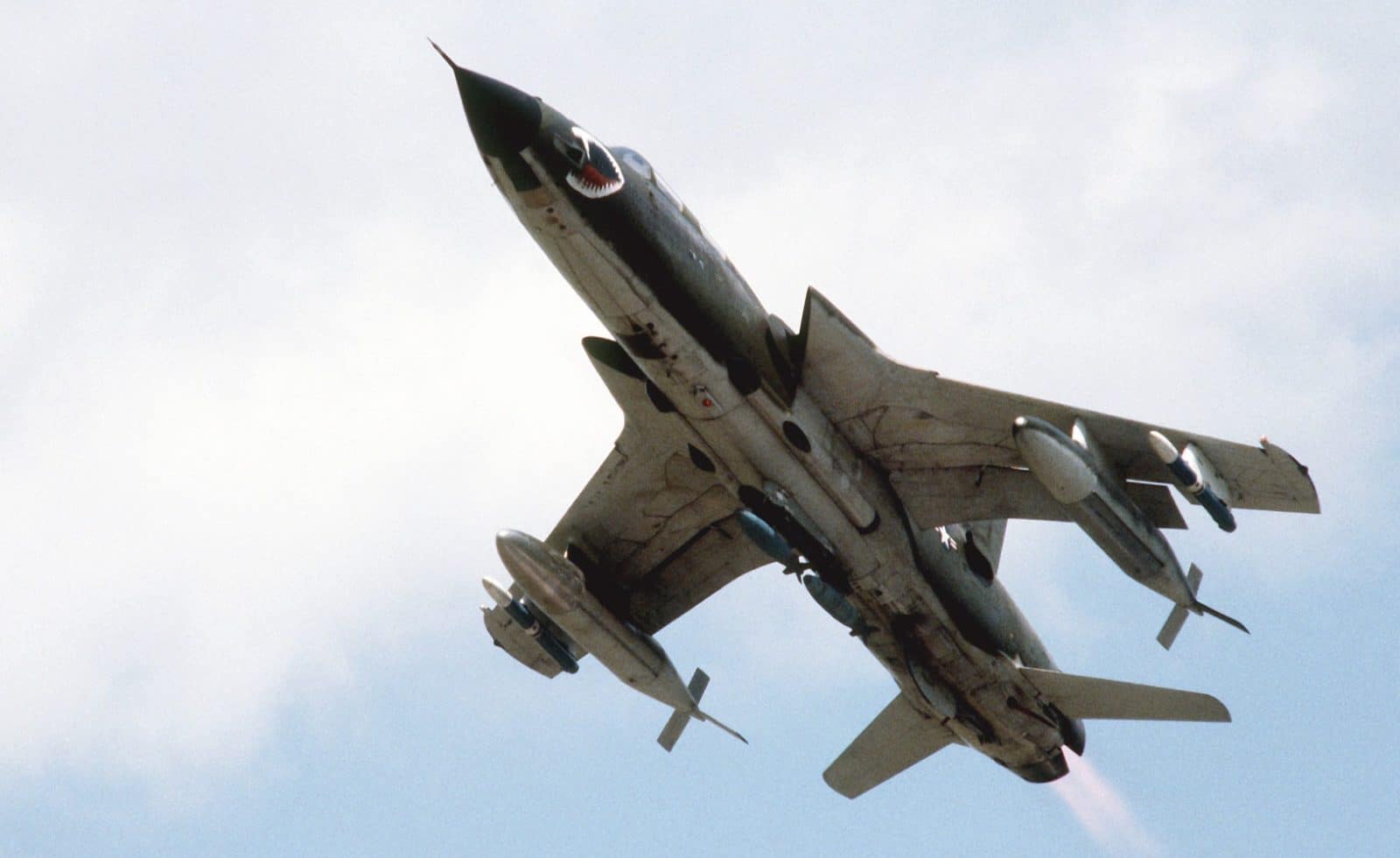The D Replaces the B
The F-105D Thud began replacing the B in frontline service in the early sixties. The first D-model Thunderchief took to the skies on 9 June 1959. The D-model Thud featured improved and more advanced radar and fire control systems, all-weather flight capability, and the ability to carry the Mark 43 atomic bomb. In order to accommodate the improved radar and its larger antenna the forward fuselage was lengthened by 16 inches (41 centimeters). By 1964, only Air National Guard (ANG) squadrons were equipped with the F-105B.
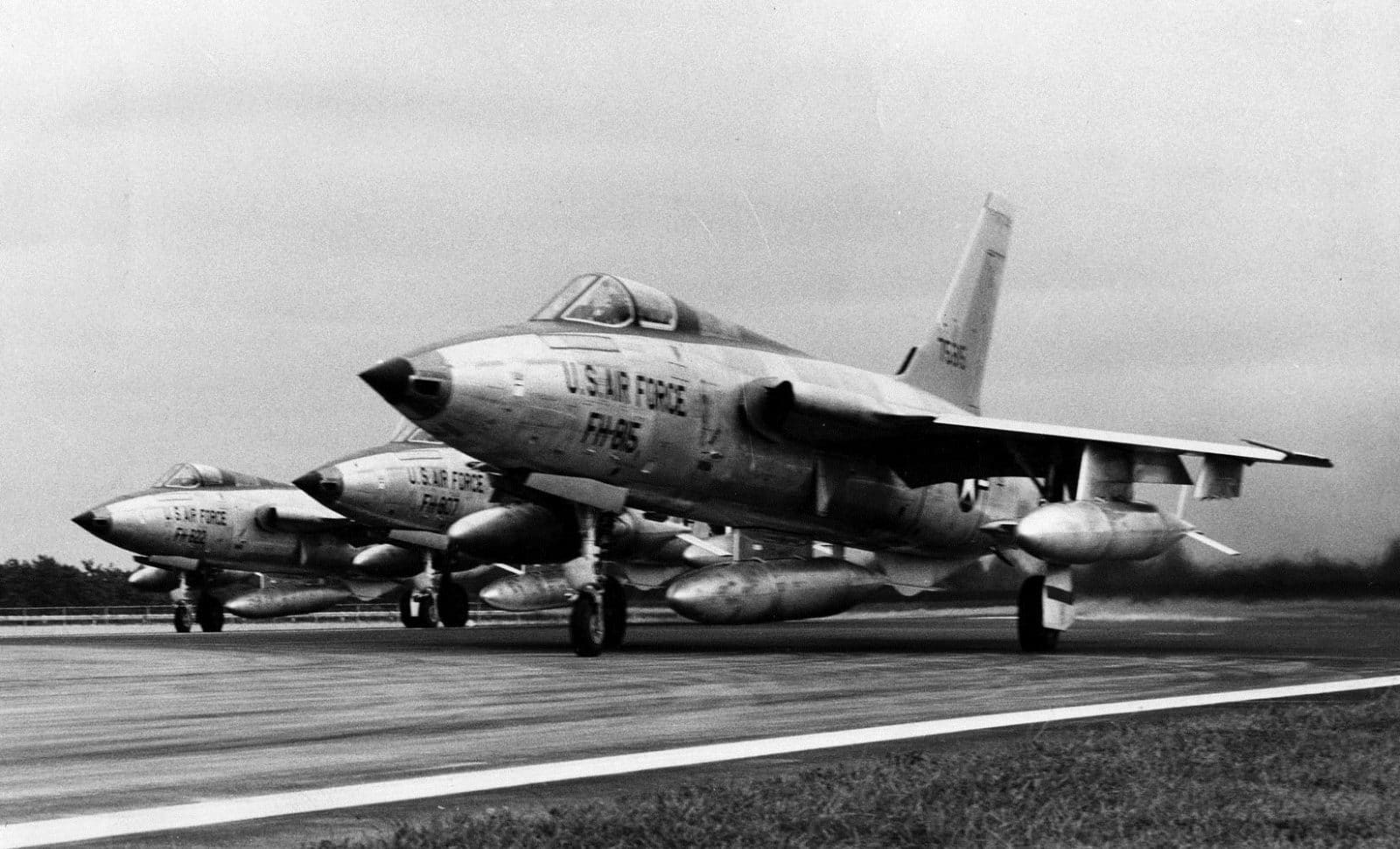
Hauling a Hefty Payload
In June of 1961, an F-105D Thud delivered 15,430 pounds (7,000 kilograms) of bombs during a test, which was a record for a single-engine aircraft at the time. That works out to a payload roughly three times that carried by World War II four-engine heavy bombers like the Boeing B-17 Flying Fortress and the Consolidated B-24 Liberator.
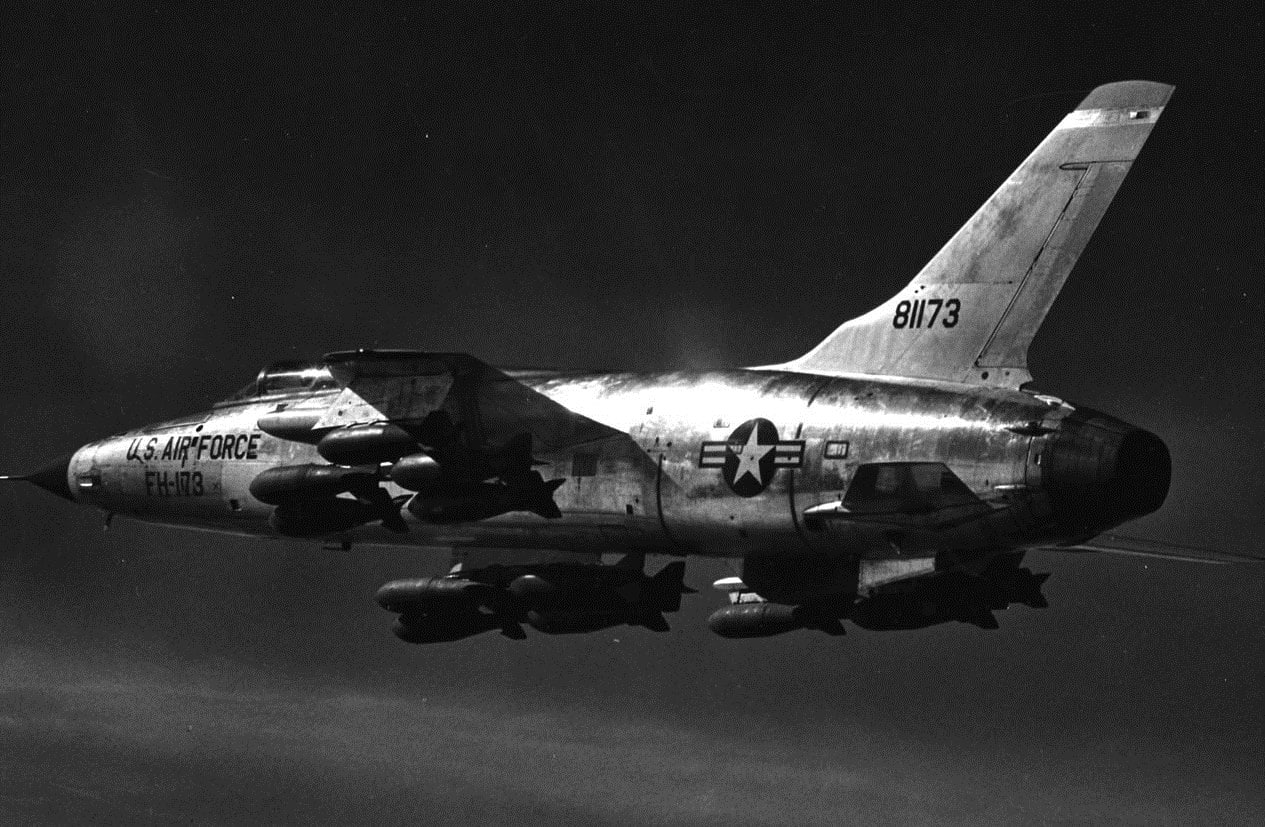
To War in Vietnam
In spite of a troubled early service life, the F-105 became the dominant attack aircraft early in the Vietnam War. The F-105 could carry more than twice the ordnance, faster and farther, than the F-100 Super Sabre that it replaced. F-105s carried out attacks on difficult-to-hit targets all over North Vietnam and neighboring belligerent countries.
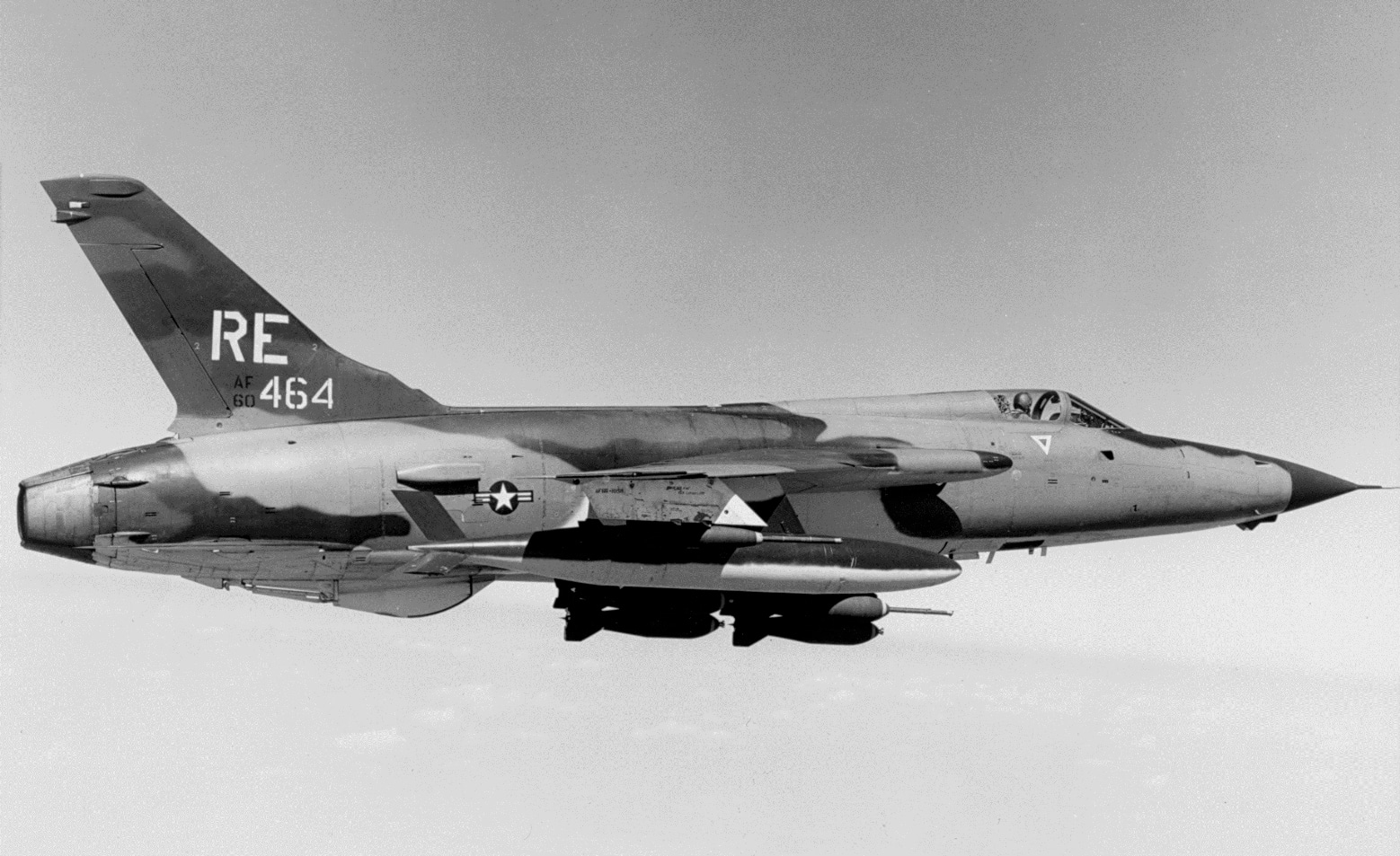
Gunfighter
F-105s attacking Vietnamese targets were often escorted by F-4s to protect them from enemy fighters and to prevent the F-105s from having to jettison their external loads to maneuver with the nimble Vietnamese MiGs. When forced to fight for themselves, Thuds were officially credited with 27.5 air-to-air victories against North Vietnamese MiG-17s while 17 F-105s were lost to enemy fighters. While one victory was shared with an F-4 Phantom II, 24.5 of the MiG-17s were shot down using the internal Gatling gun and three victories were achieved using AIM-9 Sidewinder missiles.
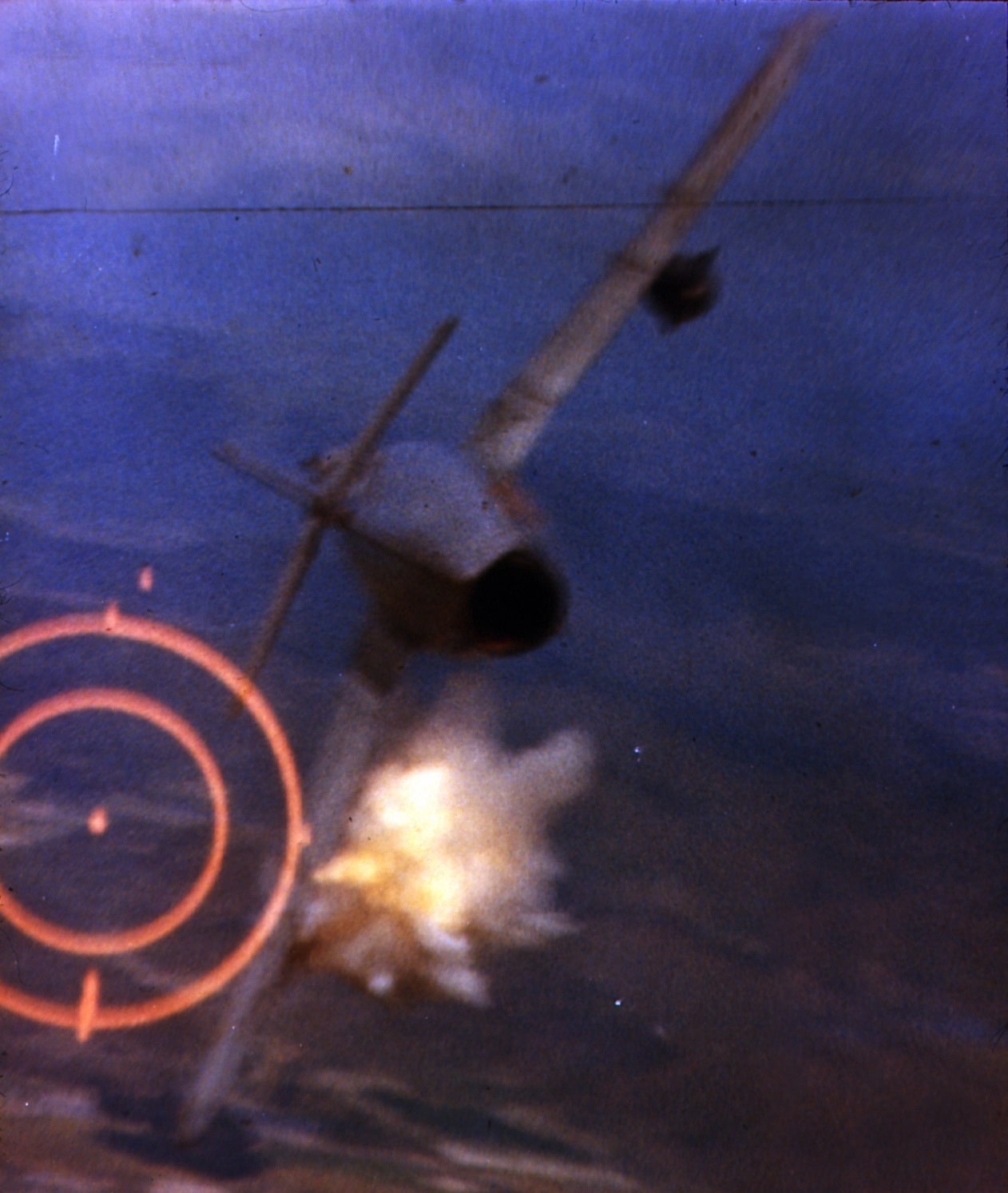
Sometimes Things Just Fall into Place
There was even one F-105F (unofficially) credited with “shooting down” three MiG-17s on one sortie- one victory was achieved by missile, another using the internal gun, and the third by extraordinarily expedient jettisoning of the Thud’s centerline bomb rack, which dropped right into the path of one very unfortunate MiG.
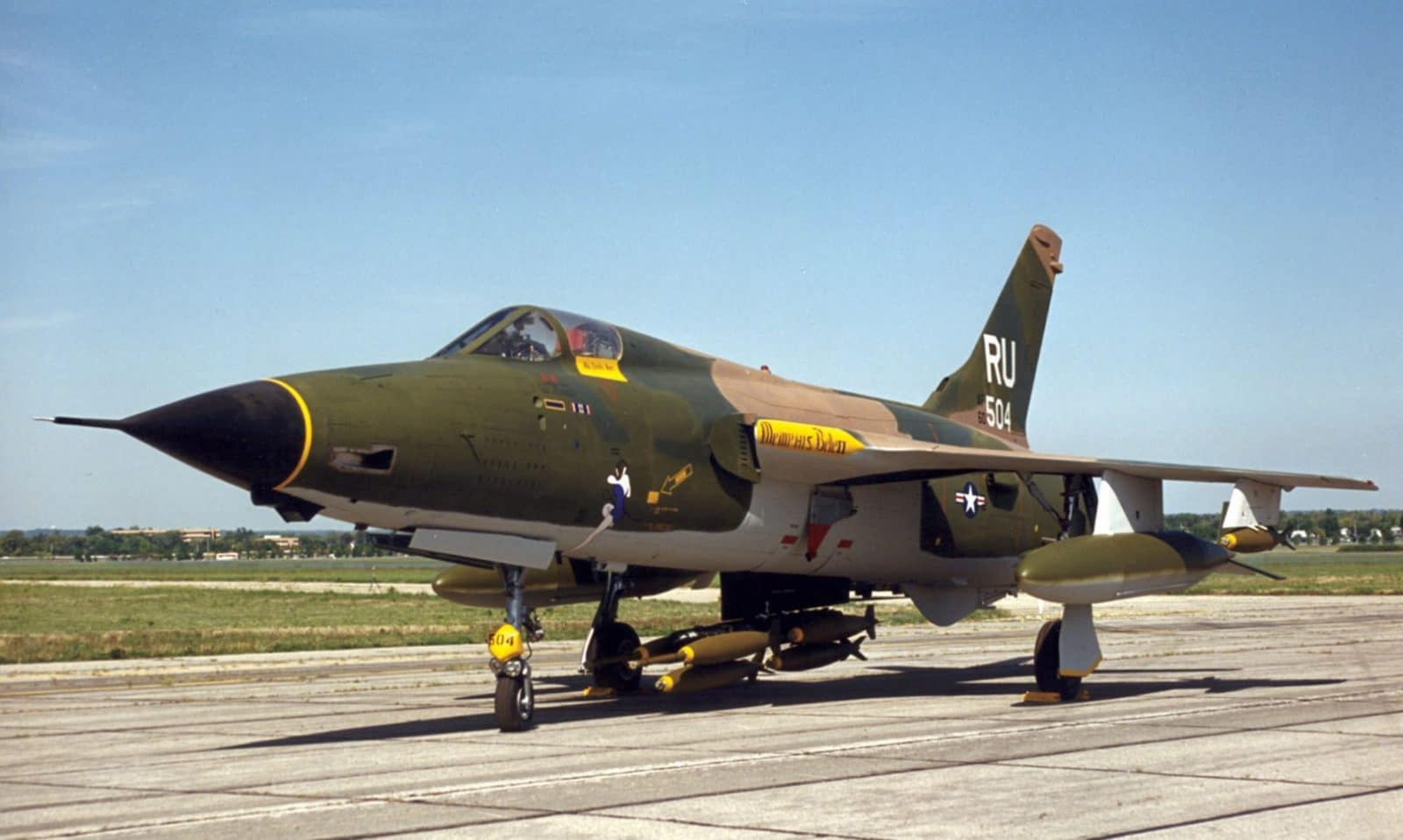
Enter the Wild Weasel
The last 143 Thunderchiefs built were two-seat F-105F trainers. Continuing upgrades improved the reliability and weapons capacity of the existing F-105Ds. In response to the surface-to-air missile (SAM) threat, dozens of F-105Fs were converted into anti-radar Wild Weasel aircraft, developing eventually into the F-105G.
